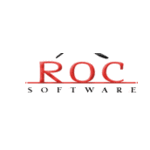
ActiveBatch Workload Automation
ActiveBatch Workload Automation is a powerful job scheduler that simplifies automation across diverse IT environments. With hundreds of pre-built job steps and a low-code REST API, users can orchestrate processes effortlessly. It offers robust monitoring, customizable alerts, and secure access, ensuring compliance while maximizing cloud resources and meeting SLAs seamlessly.
Top ActiveBatch Workload Automation Alternatives
ROC Maestro
ROC Maestro revolutionizes job scheduling across Unix, Linux, and Windows environments by streamlining administration and minimizing resource demands.
Azure Batch
Azure Batch offers robust cloud-scale job scheduling and compute management, allowing users to seamlessly scale from tens to thousands of virtual machines.
FastCron
FastCron is a reliable online service for managing cron jobs across multiple websites.
EasyCron
EasyCron simplifies cron job management with a user-friendly web interface, eliminating the need for software installation.
Robot Schedule
Robot Schedule is an advanced job scheduler software designed for IBM i environments, enabling efficient workload automation.
JS7 JobScheduler
JS7 JobScheduler is an advanced open source workload automation system that excels in performance, resilience, and security.
Trigger.dev
With support for Python and JavaScript, it enables writing reliable asynchronous code without timeouts...
Ctfreak
It supports long-running calculations and data imports across diverse servers via a user-friendly web interface...
A-AUTO
It ensures reliable job monitoring with minimal staff involvement, seamlessly integrates various applications, and operates...
Top ActiveBatch Workload Automation Features
- Pre-built job step templates
- Customizable reporting options
- Flexible monitoring capabilities
- Event-based automation triggers
- Controlled access management
- User-friendly interfaces
- Cloud resource provisioning
- SLA management automation
- High availability architecture
- Cross-platform workflow orchestration
- Seamless data transfer integration
- Self-service automation portals
- Role-specific dashboard views
- Advanced scheduling features
- Machine learning resource allocation
- Policy-driven governance tools
- Proactive alerting mechanisms
- Integrated incident management
- Extensive training resources
- Direct access to expert support








